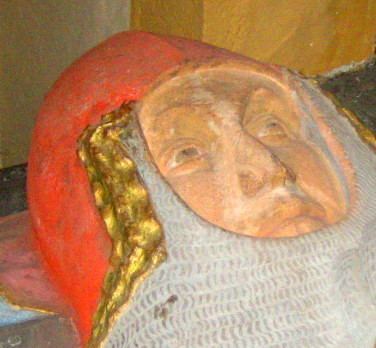Noble family House of Zahringen Died 1428 | Name Rudolf Margrave | |
 | ||
Spouse(s) Adelheid of LichtenbergAnne of Freiburg-Neuchatel Mother Catherine of Thierstein Buried Gallus Church in Rotteln | ||
Margrave Rudolf III of Hachberg-Sausenberg (1343–1428) was the son of Margrave Rudolf II of Hachberg-Sausenberg and Catherine of Thierstein. He inherited Hachberg-Sausenberg when his father died in 1352. As he was a minor at the time, his uncle Otto I acted as regent. When Rudolf II came of age, he and Otto I ruled jointly, until Otto's death in 1384. Rudolf III is considered the most important of the Margraves of Hachberg-Sausenberg.
Contents
Construction activities
Rudolf III initiated a number of construction projects. Two gatehouses, one large building and a tower were added to his residence Rötteln Castle in 1360. In 1387 and 1392, other large buildings were added. In 1401, he built a church in the village of Rötteln (now the Evangelical Church). In 1418, he expanded this church to the main church of his territory. Rudolf's tomb and the tomb of his second wife, Anna, both in this church, are considered major examples of Gothic art in the Upper Rhine.
Expansion of the country's sovereignty
During his long reign, Rudolf was able to extend his country's sovereignty significantly:
Marriage and issue
Rudolf III first married Adelheid of Lichtenberg and later Anne of Freiburg-Neuchâtel. On 13 February 1387, Rudolf closed a marriage contract with Konrad of Freiburg and Else of Neuchâtel for Konrad's 13-year-old sister Anna. Her dowry would be 12000florins, in the form of the city and district of Sennheim valued at 7500 florins, Istein Castle, valued at 3000 florins, 1500 florins in cash, on the condition that he would use it to create manors in the area between Hauenstein, the forest and the mountains on both sides of the river, within one year after the wedding. With Anne, he had seven sons and six daughters. One son and three daughters fell victim to the plague in 1420. His son Otto (1388–1451) was Bishop of Constance from 1411 to 1434 as Otto III of Hachberg and was the host of the Council of Constance in 1415. As such, he was involved in the burning at the stake of the Czech reformer Jan Hus. The only other son to survive him, was the youngest, William, who succeeded him in 1428.
